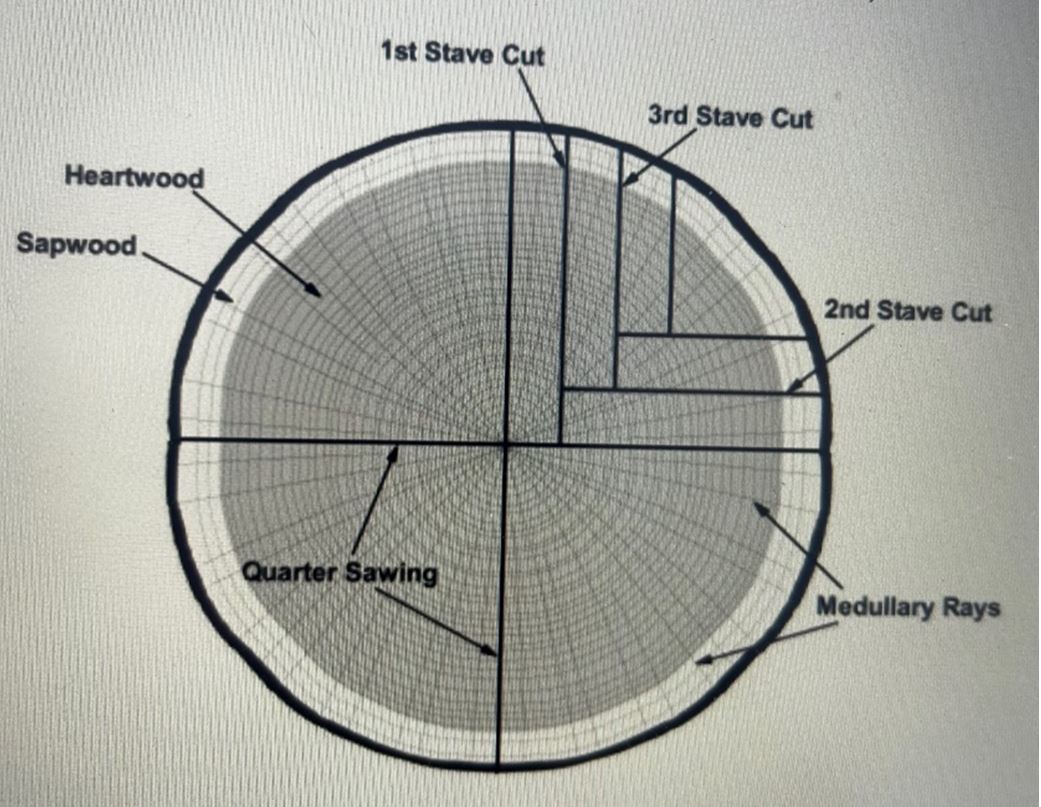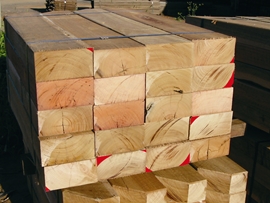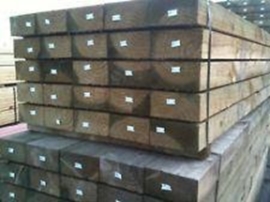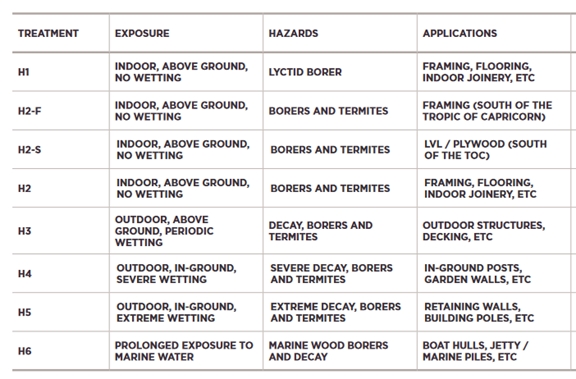Timber Treatment: Busting timber treatment myths
A range of different chemical preservative treatments have been developed to enhance the durability and service life of timber. These chemical treatments impregnate the wood cells, making them resistant to decay, insects etc. Even species like pine with very low natural durability can be effectively treated to resist insect and/or fungal attack.
However, the devil, as always, is in the detail..
Timber Treatment is primarily concerned with the protection of Sapwood (young wood just under the bark) which, as we know, is not durable in any species and will quickly be destroyed if exposed to hazards such as termites or rot. Luckily, being young and soft, the Sapwood of all species can be effectively impregnated with preservative chemical treatments.
Heartwood (older wood in the middle of the tree), on the other hand — whether pine or hardwood — cannot be effectively treated as it is full of resins and other extractives which prevent the uptake of preservative solutions. ‘Treated’ Heartwood is a surface coating at best, so the natural durability of this material is far more important for long-term performance than the tiny amount of chemical which coats the outside.
To help you understand this, consider the following: When a log is milled as shown in the photo below, some pieces will end up with varying amounts of non-durable Sapwood present – some pieces will have none (all heartwood), some will have a little Sapwood and some will have a lot, depending on where the piece was cut from the log and whether the log is hardwood or softwood. Any Sapwood present on any boards must be treated.

Consider also the two photos below of stacks of sawn hardwood and pine. Notice how little Sapwood there is in the hardwood photo on the left (coloured in red)? Just a few corners. This is all that will be effectively treated. The rest (probably 95%) is Heartwood which can’t be treated, but hopefully is a well-specified durability Class 1 (in-ground) species, so will perform well. Can you see how careful selection of durable species is far more important than what level you treat to?
Contrast this to the pine sleepers on the right. The darker green is where the treatment chemical was able to penetrate the large Sapwood band, while the pale yellow is untreated Heartwood. Perhaps 60% of these sleepers are effectively untreated apart from a surface coating of chemical over the ends. As soon as they are cut or drilled you are exposing untreated, durability Class 4 pine. How long do you think that will last in the ground?

Hardwood

Pine
This isn’t to say that timber treatment is a waste of time. Stabilising any Sapwood present is very important and a legal requirement for many construction timbers like Spotted Gum. Otherwise, it will rot off which is unsightly and may result in weakening of the member and/or structural failure in extreme cases.
It’s just that there are other, equally important, factors to consider in order to get a good service life out of your timber. These include:
- Careful species selection (refer to our post on Timber Durability)
- Good design (to minimise moisture and debris traps mainly)
- Timber size (bigger end sections last longer)
- Effective long-term maintenance.
Now that you better understand the limitations of timber treatment, you are ready to appreciate the different levels which can be applied.
Preservative treatment levels are specified using a “H” or “Hazard Level” scale as shown below. Different chemicals, concentrations and methods can be used to achieve these hazard levels.

Want to know more about timber treatment before you undertake your next project? Gowan Lea can provide you with the best timber and lend expert knowledge, ensuring you have an incredible end-product. Call (07) 5448 8711 or visit https://www.gowanleatimbers.com.au/
